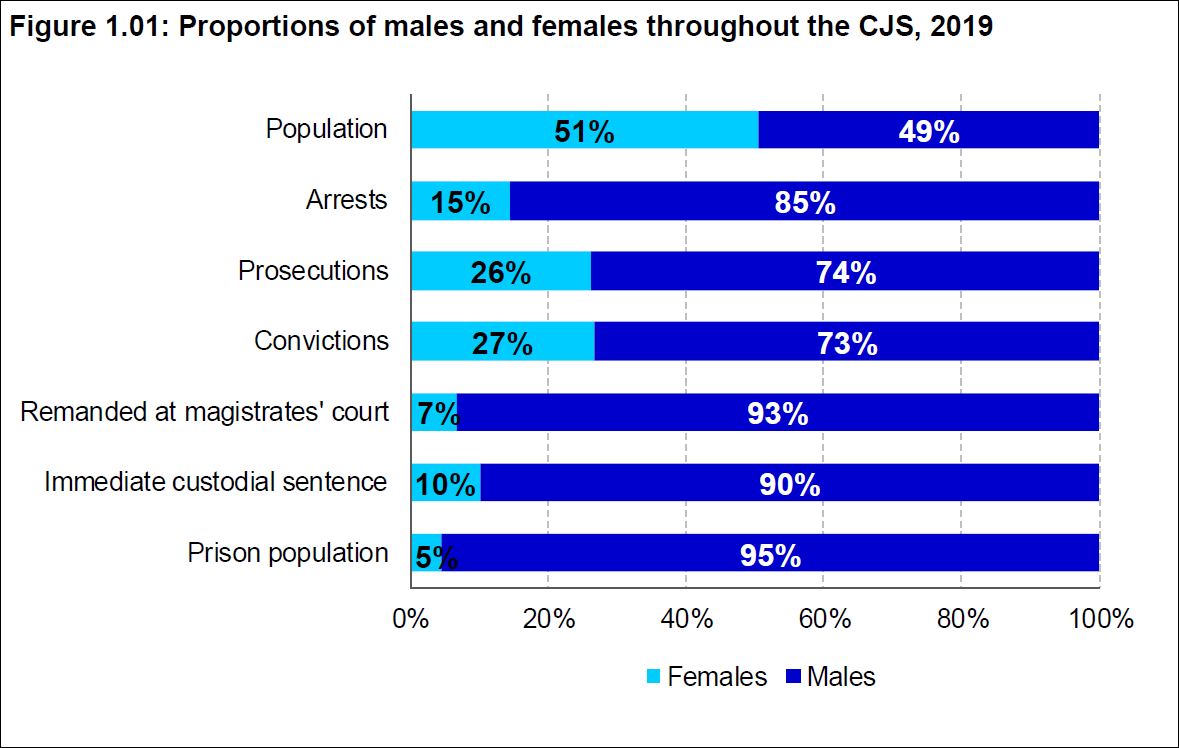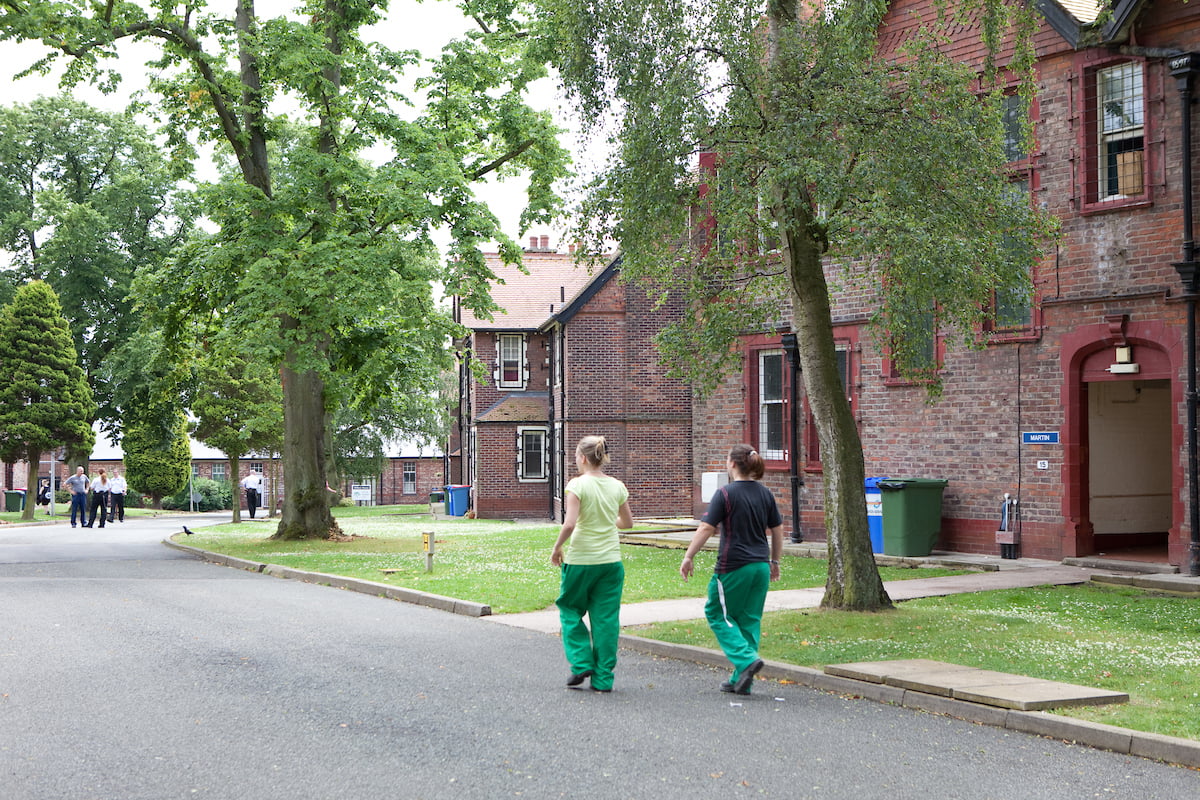Annual Section 95 stats
Yesterday the Ministry of Justice published its annual statistical bulletin on women and the criminal justice system under Section 95 of the Criminal Justice Act 1991(which I was fortunate to download before the whole government website crashed as the post-COVID tiers were announced!). The publication compiles statistics from data sources across the Criminal Justice System (CJS), to provide a combined perspective on the typical experiences of females who come into contact with it, with all data relating to the year 2019. It considers how these experiences have changed over time and how they contrast to the typical experiences of males.
In general, females appear to be substantially underrepresented throughout the CJS compared with males. This is particularly true in relation to the most serious offence types and sentences, though patterns by sex vary between individual offences.
The graphic below shows that while women make up 51% of the population in England and Wales, only one in twenty of the prison population is a woman. Conversely, it’s interesting to see that while 15% of all arrests are of women, this proportion rises significantly for prosecutions (26%) and convictions (27%).

Other figures that are of note are:
Males maintain higher risk of personal crime than females.
In 2019/20, 3.9% of males were victim to personal crime, compared to 3.4% of females.
Females were typically dealt with for less severe offences at court.
Of all female defendants prosecuted at court, 55% were prosecuted for summary non-motoring offences compared to 29% of male defendants in the latest year.
In 2019, the average custodial sentence length (ACSL) for male offenders was 19.7 months compared to 11.3 months for female offenders.
A greater proportion of female offenders are sentenced for offences that tend to receive shorter sentences.
A higher proportion of female prisoners self-harmed in 2019.
In 2019, the number of individuals who self-harmed per 1,000 prisoners was 335 for females and 148 for males. Self-harm per individual was over twice as high for females at 9.3 instances, compared to 4.4 for males.
Ethnic minority groups accounted for a higher proportion of prosecutions against males compared to females.
In 2019, Black males were particularly over represented, accounting for 12% of all male prosecutions. This compared to Black females accounting for 6% of all female prosecutions.
A higher proportion of female offenders were first time offenders, compared to males.
Of all female offenders cautioned or convicted in 2019, 35% were first time offenders, compared to 22% for males.
Theft from shops was the most common indictable offence for which 34% of females and 14% of males were convicted in 2019.
Of the 34,300 defendants convicted for shoplifting, 9,600 (28%) were female. The custody rate for this offence was lower for female offenders (19%) than for males (26%).
As always, the MoJ produces a really helpful infographic summarising most of the key data. I have reproduced the infographic below.
Thanks to Andy Aitchison for kind permission to use the header image in this post. You can see Andy’s work here.









One Response
There is widespread agreement within the CJS for the need to reduce the short term imprisonment of women. Towards that aim the following matters need to be debated with suggestions made for appropriate action.
In 2018, 358 female offenders sentenced in England received a custodial sentence of 6 months or less where the PSR was oral( MoJ FOIA Request 200819013) The corresponding figure for Wales was 38. Early this year the Probation Inspectorate was very critical of the quality of oral reports, in particular “Insufficient attention being given to detailing accredited programmes or other treatment requirements ” In other words missing opportunities to contact, for example, Womens’ Centres-a major driver in providing services to reduce short term custody.
It must surely follow that oral reports on women facing custody, should be abandoned, as poor judicial practice.
In 2018,145 (31%) of the custodial sentences recommended in PSRs for female offenders in England resulted in a custodial sentence of six months or less (MoJ FOIA as above) The corresponding figure for Wales was 21 (29%)
It is clear from the above that a very significant number of women receiving both short and longer term custody have been recommend for such in PSRs.
A debate need to be held as to whether PSR writers need to limit their recommendations to their area of expertise-namely the management of offenders within the community. Additionally to explore whether the algorithms contained in the practice document assisting PSR writers may contain a bias towards considering a custodial recommendation.
A final point relates to the funding of Womens’ Centres. As such bodies can play a significant part in reducing short term custody they should be properly funded from the MoJ budgets
Additionally ,to explore whether the algorithms, contained in the practice document assisting PSR writers determine a suggested outcome, for a woman offenders contains any biases which may enhance a PSR recommendation for custody